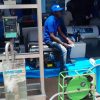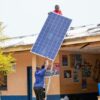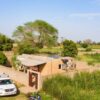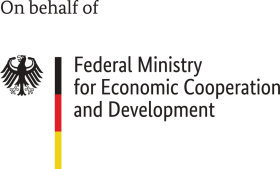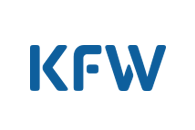Health centres sell ice cream and drinks thanks to solar electricity
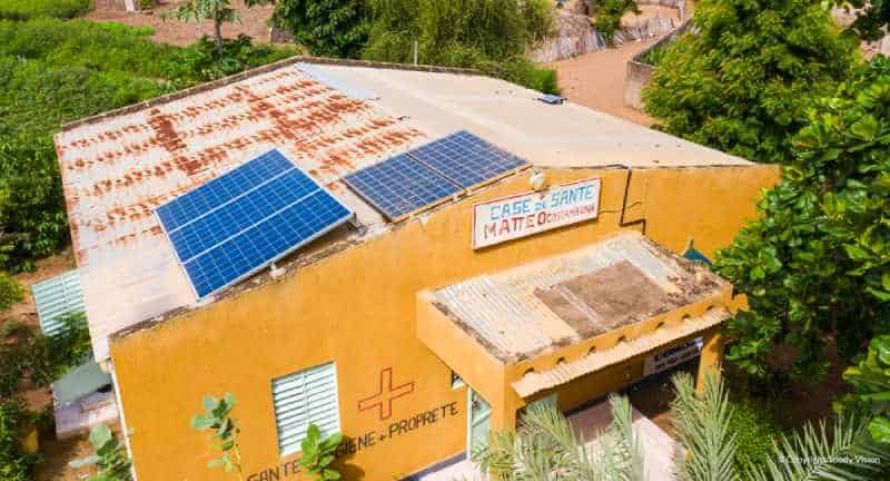
Since October 2021, 15 health centres have been producing their own solar electricity. This allows them to supply patients around the clock. People also come by for another reason. Namely, at the centres, people can buy cold drinks and ice cream, charge their cell phones or borrow a solar lamp for a small fee. The revenue goes toward maintenance – but also allows internet access.
The days when Amy Diouf dreaded spending nights in her health centre because a baby wanted to be born at night are finally over. The director of the health centre in Mbafaye, 130 kilometers east of Dakar, is delighted. Because without electricity, such a birth was never without risk. “We had to use candles and flashlights to be able to see, and we often had trouble reaching the nearest health centre when there were complications because our phones’ batteries were constantly dead,” she recalls.
Since October, a photovoltaic (PV) system has been producing electricity for the health centre, using the sun, which a battery can store. Now Amy Diouf has light 24 hours a day, sensitive medicines are stored in the refrigerator, and fans ensure a more pleasant indoor climate in Mbafaye. Her health centre is just one of a total of 15 centres that – supported by Green People’s Energy (GBE) – have been able to set up their own PV systems.
With access to electricity, it’s no longer just patients who come to her centre; the rest of the population also drops by regularly. That’s because Amy Diouf’s health centre is now also a kiosk, rental shop and charging station. “We sell cool drinks and ice cream, lend solar lamps and charge cell phones,” she says.
These additional services enhance people’s quality of life and also flush revenue into the coffers of her health centre. The 14 other health centres also started income-generating activities with their PV systems. On average, each of them generates 41 euros per month, with revenues per center varying significantly between eleven and 130 euros.
In any case, they welcome the income. As said by Amy Diouf: “With the lion’s share, we can finance regular maintenance and set aside money for repairs and spare parts,” she says. With another part, she pays for access to the Internet, which makes remote diagnoses possible via telemedicine, for example.
The additional income thus secures the long-term operation of the PV systems, and they ensure reliable health care, for example, for pregnant women and their newborns. “Since October 2021, 29 babies have been born at our facility – 24 of them at night,” says Amy Diouf. Today, that no longer worries her.
For more information about the project, click here.
